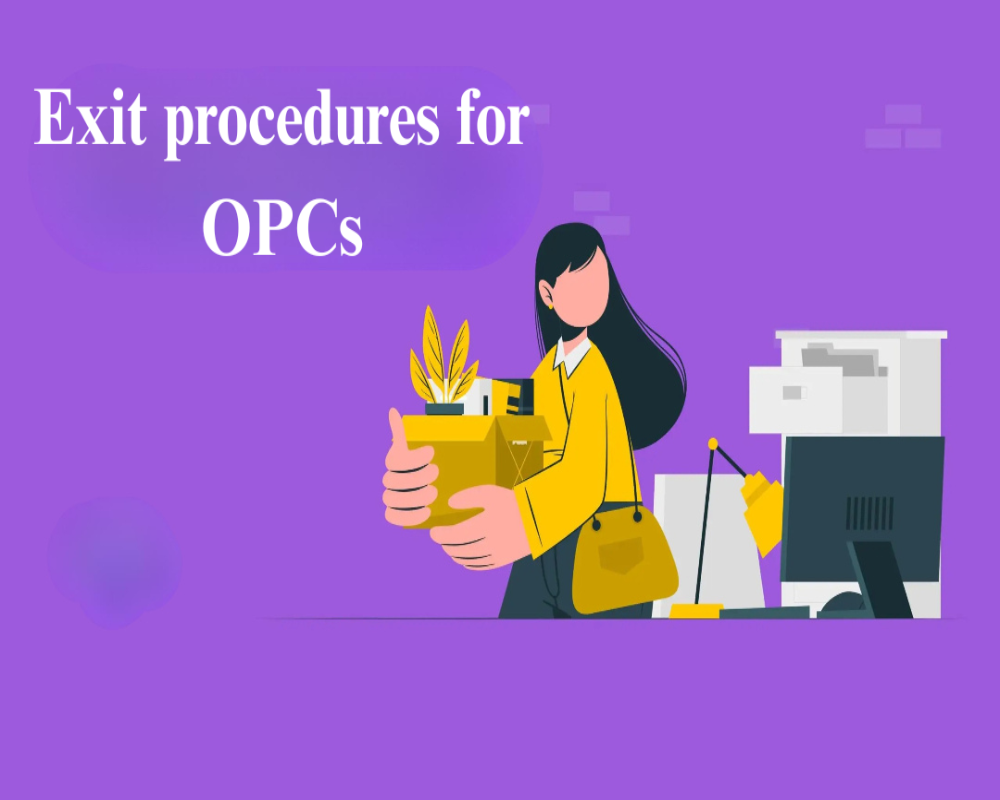Introduction
A One Person Company (OPC) offers individual entrepreneurs a formal and flexible business structure with the benefits of limited liability. However, due to operational challenges, shifting business goals, or financial constraints, the owner may decide to close or exit the business. The Companies Act, 2013 provides structured exit options to legally dissolve an OPC, ensuring that all stakeholders are considered and statutory obligations are met. Whether through voluntary closure or regulatory action, the exit process must follow due legal procedure. This article outlines the various exit procedures for OPCs, detailing the steps and regulatory compliance involved.
Voluntary Strike Off by the OPC
The most straightforward method of exiting an OPC is through voluntary strike off under Section 248(2) of the Companies Act, 2013. If the company has no liabilities and has not conducted business for at least one year, it can apply to the Registrar of Companies (RoC) for removal of its name from the register. The company must file Form STK-2 with supporting documents such as an affidavit, indemnity bond, and financial statements.
Filing of STK-2 Form
Form STK-2 is the official application for voluntary closure. It must be filed along with:
- A statement of accounts not older than 30 days
- An affidavit from the director declaring no pending liabilities
- An indemnity bond assuming responsibility for future liabilities
- A board resolution approving the closure
The form is submitted to the RoC, and upon satisfaction, the name of the company is struck off from the records.
Non-Operational OPCs – Fast Track Exit Scheme
The Fast Track Exit Scheme (FTE) is available to dormant or inactive companies that have not carried out any business activity since incorporation or for a defined period. Such OPCs can avail this option by filing STK-2 with reduced procedural burden. This route is ideal for companies that have no active operations, assets, or liabilities.
Compulsory Strike Off by Registrar
In cases where an OPC fails to file annual returns or financial statements for two consecutive financial years, the RoC has the authority to initiate a compulsory strike off under Section 248(1). A notice is issued to the company and its director, and if no satisfactory response is received, the company is removed from the register of companies.
Winding Up Through Tribunal
In situations involving debts, liabilities, or disputes, an OPC may undergo winding up through the National Company Law Tribunal (NCLT) under Section 271 of the Companies Act. This process is complex and includes appointment of a liquidator, public notices, asset distribution, and legal scrutiny. It is usually opted when voluntary strike off is not possible.
Clearance of Outstanding Liabilities
Before applying for strike off or winding up, the OPC must ensure that all debts, statutory dues, employee dues, and liabilities are cleared. A No Dues Certificate from creditors may be required in some cases. Failure to settle liabilities can result in rejection of the closure application or legal proceedings against the director.
Surrender of PAN, GST, and Licenses
Once the company is approved for closure, it must surrender its PAN, GST registration, and other licenses. Bank accounts should be closed, and the Registrar of Companies must be informed of the same. All legal and financial obligations must be concluded to prevent future penalties or revival.
Impact on Director and Future Incorporations
Once an OPC is closed legally, the director is free to start a new company or join other businesses. However, if the company was struck off due to non-compliance, the director’s DIN may be deactivated or disqualified, restricting their ability to form or manage other companies for a specified period.
Conclusion
Exiting a One Person Company requires careful planning and legal compliance. Whether through voluntary strike off, tribunal winding up, or regulatory enforcement, the process must be carried out transparently to avoid future liabilities or penalties. Timely filing, liability clearance, and adherence to prescribed procedures ensure that the OPC is closed in accordance with the law. For entrepreneurs who have completed their business journey or wish to transition to new ventures, understanding and following the correct exit procedures is essential for a smooth and lawful conclusion of business activities.
Hashtags
#ExitProcedures #OPCManagement #OperationalExcellence #BusinessContinuity #ExitStrategy #ProcessImprovement #Compliance #RiskManagement #EmployeeTransition #OrganizationalChange #BestPractices #WorkplaceSafety #TeamCollaboration #ChangeManagement #ExitChecklist #TrainingAndDevelopment #Leadership #EmployeeEngagement #SmoothTransitions #BusinessOperations


0 Comments